1942: Milton Brooks –“Ford Strikers Riot.” In April of 1941, a worker was fired from the Ford Motor plant in Detroit, MI. A few days later, tensions had built among the employees, and picketers walked the street encouraging other workers to leave and inciting the first strike in the history of Ford Motors. One plant employee attempted to push past the picketers and into the building (against the advice of the State Police and Ford Service men), and his confrontation with the picketers became heated. Within a matter of minutes, the “time man” and the picketers were fighting, the man attempting to cover his head and face with his coat. The man was injured, dazed, and taken to the plant hospital for treatment.
1943: Frank Noel – “Water.” In January of 1942, photographer Frank Noel was covering British troops in Singapore. The Pacific War was going badly and Japanese planes were beginning to bomb the city. Noel had contracted malaria and was in the process of being shipped back to the United States when the freighter he was traveling on was hit by a Japanese torpedo. The ship went down in the Indian Ocean and Noel managed to escape and board a life vessel with 27 survivors. The group drifted aimlessly for five days in scorching heat. During the disaster, a separate lifeboat of survivors approached the men explaining that they had lost their water supply in the rush to escape from the boat. As they neared Noel’s boat one of the sailors reached out his hand and begged for water. Sadly, they had none to offer.
1944: Earle Bunker – “Homecoming.” The Omaha World-Herald's photo, taken in Villisca, Iowa, on July 15, 1943, Lt. Col Robert Moore is greeted by his wife, Dorothy Dee Moore, and daughter Nancy, 7. At left is a young nephew Michael Croxdale.
1945: Joe Rosenthal – “Raising the Flag on Iwo Jima.” U.S. Marines raise the American flag atop Mt. Suribachi on the Japanese Island of Iwo Jima, Feb. 23, 1945. Three of the men in the photo were later killed in fighting on the island.
1946: No picture for this year.
1948: Frank Cushing – “Boy Gunman and Hostage.” In June 1947, Frank Cushing sat in his car outside a restaurant, waiting to photograph robbery victims. Then Cushing heard an alert coming from the radio of a parked police car. A shooting had taken place just down the street. Two police officers had stopped 15 year old Ed Bancroft and questioned him about the robbery. Suddenly the boy pulled a pistol and started shooting. He shot one policeman in the arm and fled to an alley, where he grabbed a hostage, another 15 year old named Bill Ronan. The police blocked the ends of the alley to cut off Bancroft’s escape, but he threated to shoot Ronan if the police came closer. He fired several times at police and repeatedly shoved the gun into Ronan’s back. Eventually, there were about 30 police in the area. One of them worked his way along the fence to a spot where Bancroft was making his stand. The cop stood up behind Bancroft, reached over the fence, and hit him with the butt of a weapon. The dazed youth, who had nothing to do with the robbery, was taken into custody.
1949: Nathaniel Fein – “The Babe Bows Out.” He was the greatest ballplayer of them all, the towering Sultan of Swat. But by 1948, Babe Ruth had been out of the game for more than a decade and was struggling with terminal cancer. So when the beloved Bambino stood before a massive crowd on June 13 to help celebrate the silver anniversary of Yankee Stadium—known to all in attendance as the House That Ruth Built—and to retire his No. 3, it was clear this was a final public goodbye. Nat Fein walked behind Ruth, where he saw the proud ballplayer leaning on a bat, his thin legs hinting at the toll the disease had wreaked on his body. From that spot, Fein captured the almost mythic role that athletes play in our lives—even at their weakest, they loom large. Two months later Ruth was dead, and Fein went on to win a Pulitzer Prize for his picture. It was the first one awarded to a sports photographer, giving critical legitimacy to a form other than hard-news reportage.
1950: Bill Crouch – “Near Miss at Airshow.” Pilot Chet Derby was carrying out a loop-the-loop in a biplane before a crowd of 60,000. Three B-29 Super Fortresses were supposed to fly through Derby's smoke trail, but the B-29s came in too early and the biplane came within five feet of hitting the B-29's wing.
1951: Max Desfor – “Flight of Refugees.” In bitter cold, residents from Pyongyang, North Korea, and refugees of other areas crawl over precarious, tangled girders of a bridge across the Taedong River on Dec. 4, 1950, as they flee south ahead of advancing Chinese Communist troops fighting on the side of North Korea.
1952: John Robinson and Don Ultang – “Sequence of Six Pictures.” In 1951, racial tensions remained high in the United States and were spilling into the racially-integrated world of college football. Johnny Bright was one of the first black players. Bright’s future seemed assured when in his senior year, he was on the short list for Heisman Trophy candidates. Playing for Drake University in the game against Oklahoma A&M, Bright was repeatedly violently attacked by white players including defensive tackle Wilbanks Smith, who used racially derogatory language against Bright and incited his teammates to target Bright. In a series of aggressive tackles during the first seven minutes of the game, Bright was knocked unconscious three times. In the final hit from Smith, Bright’s jaw was broken. Because of the injury, he was forced to leave the game. A series of six images taken by cameramen Don Ultang and John Robinson clearly showed that the hits against Bright were made long after the hand-off of the football. The two photographers had decided to focus on Bright because of the rumors of him being targeted, and the effort was well worth it. Because of these direct assaults, the NCAA changed the rules about protective gear and declared that all players must wear protective helmets with faceguards. The series of photos was published in the Des Moines Register, eventually made the cover of Life Magazine, and won them the 1952 Pulitzer Prize for photography.
1953: William Gallagher – “A Hole in His Shoe.” This picture show former governor of Michigan Adlai Stevenson caught with a hole in the sole of his shoe. Stevenson ran twice for president on the Democratic Party in 1952 and 1956, losing both times to republican Dwight Eisenhower. On his third attempt in 1960, he lost the democratic primary to John Kennedy.
1954: Virginia Schau – “A Thrilling Rescue.” Paul Overby, one of two drivers trapped in the cab of a tractor trailer, is pulled to safety by a rope on the Pit River Bridge across Shasta Lake near Redding, Calif., May 3, 1953. Both Overby and co-driver Hank Baum were rescued before the cab burned and fell to the rocks below. Virginia Schau, an amateur photographer, used a Kodak Brownie camera to shoot the photo.
1955: John Gaunt – “Tragedy by the Sea.” April 2, J 954. Photographer John Gaunt lounges in his front yard in Hermosa Beach, Calif. A neighbor calls out. "Something is happening on the beach," says Gaunt. "I grabbed a RoIIeiflex camera and ran." Down by the water, Gaunt finds a distraught young couple by the shoreline. Moments before, their 19-month-old son was playing in the sand. Somehow, he was swept away by the tide. The little boy is gone, there is nothing anyone can do. Gaunt, who has a daughter about the same age, takes four quick photographs of the grieving couple. "As I made the last exposure, they turned and walked away" he says. The little boy’s body was later recovered about a mile away.
1958: William Beall – “Faith and Confidence.” Beall worked as a combat photographer with the U.S. Marines during World War II. He won the Air Medal in 1945 for his coverage of the battle for Okinawa, but his most famous photograph is of a child negotiating with a police officer to cross the street during a parade.
1960: Andrew Lopez – “Last Rites.” A series of four photographs of a corporal, formerly of Dictator Fulgencio Batista's army, who was executed by a Fidel Castro firing squad, the principal picture showing the condemned man on his knees receiving last rites.
1962: Paul Vathis – “Serious Steps.” After his election into office, President John F. Kennedy faced many challenges. Among them was a communist stronghold in Cuba that was causing the United States a great deal of concern. When Kennedy was approached with a plan to invade Cuba, he allowed it as long as American involvement would be kept secret. The failed operation later became known as the Bay of Pigs Invasion. The invasion was a serious moment for Kennedy and international politics. Cuban forces had become aware of the operation and had planned a counter-attack. When the American forces landed on Cuban soil, they met with heavy resistance and suffered significant losses. Kennedy, who was with his family at Camp David, was joined by Eisenhower to discuss the severity of the situation. Paul Vathis followed the two as they walked and talked. The photo he shot of the two men from behind discussing the future of the world and their fears was entitled “Serious Steps.” It was awarded the Pulitzer Prize for photography in 1962 after its publication showed the weight and gravity of Kennedy’s presidency.
1964: Robert Jackson: “Jack Ruby Shooting Lee Harvey Oswald.” Robert Jackson showed up at the Dallas Police headquarters to photograph suspect Lee Harvey Oswald being transferred to the county jail. “I walked right in. There was no security to speak of. Nobody checked my press pass.” Jackson raised his camera. Suddenly, someone stepped in front of him. “…. Ruby took two steps and fired, and I guess I fired about the same time.” Jackson’s photograph shows Jack Ruby killing Lee Harvey Oswald – for many, a final denouement in one of the most tragic events in American history.
1966: Kyoichi Sawada: “Vietnam War.” South Vietnamese family escaping the aerial bombardment of their village in 1965. In March 1970, Sawada began to document the war as it expanded into Cambodia, following a coup d'état, which plunged the country into chaos. On 26 October of the same year, He volunteered to take the new UPI bureau chief in Phnom Penh, Frank Frosch, on trip down Cambodia’s Route 2 to Chambak. Time magazine reported on 9 November 1970: “at about 5:30 that afternoon, Cambodian soldiers heard gunfire and set out to investigate. They found Sawada’s car riddled with bullets and smashed against a tree. The next morning the bodies of Frosch and Sawada were found. They had been savagely beaten in the neck and head, then shot repeatedly in the chest. No bloodstains were found in the car, indicating the execution had been performed after the crash.”
1970: Steve Starr – “Cornell University.” Armed students led by Ed Whitfield, far right, leave Straight Hall at Cornell University in Ithaca, N.Y., after a 36-hour sit-in, April 20, 1969. The students had barricaded themselves in the building demanding a degree-granting African American studies program. University administrators offered to drop some charges against the students and accelerate the opening of an African-American studies center.
1974: Slava (Sal) Veder – “Homecoming.” Released prisoner of war Lt. Col. Robert L. Stirm is greeted by his family at Travis Air Force Base in Fairfield, Calif., as he returns home from the Vietnam War, March 17, 1973. Leading is Stirm's daughter Lori, 15, followed by son Robert, 14; daughter Cynthia, 11; wife Loretta and son Roger, 12. Stirm was held more than five years after his plane was shot down over North Vietnam in 1968.
1975: Gerald Gay – “A Lull in the Battle.” Four firefighters rest on a muddy embankment after battling an early morning house fire in Burien, WA. The fog, mixed with the residual smoke, made an eerie effect. It looked like a scene from a warzone.
1977: Stanley Forman – “The Soiling of Old Glory.” Stanley Forman was covering an anti-busing demonstration at Boston City Hall when he managed to capture a photograph that would later become iconic. The photograph depicts teenager Joseph Rakes assaulting lawyer and civil rights activist Ted Landsmark with a flagpole bearing the American flag. Landsmark was active in trying to get more minority contractors in the construction industry, and was on his way to a meeting in the courthouse. According to Landsmark: “I approached a corner where the young demonstrators were coming in the other direction. I did not see them until both they and I were at that corner.” Rakes was swinging the flag and trying to hit him, not trying to spear him as it appears in the photo, and he narrowly missed. Landsmark was bloodied during the incident. An examination of all the photographs in the roll Forman shot reveals that Rakes missed Landsmark with the flag. Landsmark had already been knocked to the ground, losing his glasses and suffering a broken nose. When he got up, the famous picture was taken. Rakes was convicted of assault with a deadly weapon and sentenced to two years imprisonment and two years probation. The jail sentence was suspended. In 1983 the Boston police issued a warrant alleging that Rakes had beaten to death the brother of his girlfriend. He fled prosecution, but returned in 1988 after the murder charge was dropped. Rakes carried the stigma of being known as “the flag kid”, but eventually turned his life around, getting married and having a family as a construction worker.
1981: Larry Price: “Liberian Coup.” Price was in Liberia in 1980 when a coup took place. Master Sergeant Samuel Doe and 15 other enlisted men of the Liberian Army slipped into the grounds of the mansion of the Liberian President, William Tolbert, gunned him down and declared that they were now in power. Price was one of the journalists at the press conference which followed. According to Price, Doe spoke briefly, then the “Minister for Information” announced “there would be some executions down at the beach.” Thirteen of Tolbert’s Cabinet ministers were led through the streets of Monrovia to a beach nearby where they were executed for crimes of “high treason, rampant corruption and gross violation of human rights.”
1982: Ron Edmonds – “Assassination Attempt on Ronald Reagan.” On Mar 30, 1981, Edmonds waited for President Reagan outside the Hilton. John Hinckley joined the crowd. Reagan appeared and started to wave. “I put my finger on the button,” Edmonds said. “The shots rang out. Through my lens I saw him grimace.” Hinckley fired six shots at the president. Secret Service agents shoved Reagan into his limo and sped away.
1982 (2): Assassination Attempt, second photo.
1982 (3): Assassination Attempt, third photo.
1983: Bill Foley – “Angry Scene at Sabra.” In 1982, Israel invades Lebanon, determined to drive out the Palestine Liberation Organization and help establish a government sympathetic to Israel. But On Sep 14, 1982, Christian president-elect Bashir Gemayel is assassinated. Bill Foley heads for the Palestinian refugee camp at Sabra, which is run by the Christian militia. “There were guys with guns at the gates – Christian militiamen who said ‘Take a hike if you don’t want to get your head blown off.’ I went back on Friday, the men were still there. There was shooting going on inside.” On Saturday, Foley returns again to find the guards gone and the gates open. Foley finds the streets piled with bodies. “You’d see it was a pile of people, not a pile of garbage. You’d see people having dinner; they had been shot at the table. Women with their hands tied behind their backs, throats cut.” For three days the Christian militia had sealed off the camp and massacred those inside, killing hundreds. “They blamed the Palestinians for killing Gemayel, even though it could have been the Syrians or the Israelis,” said Foley. “They blamed the Palestinians; someone had to pay.” One of Foley’s photos shows an angry
1984: Anthony Suau – “Starvation in Ethiopia.” For a series of photos that depict the tragic effects of starvation in Ethiopia and for a single photograph of a woman at her husband’s gravesite.
1985: Stan Grossfield – “Ethiopian March.” The Ethiopian Government’s attempt to starve the rebel held countryside into submission has devastating effects on innocent victims. Children so hungry their bodies begin to consume themselves. Some 130,000 tons of food from the U.S. was held up by the Ethiopian government. Said Grossfield: “We snuck food in on a convoys. The convoys would have to travel at night, and during the day they’d cover it up because Ethiopian MiGs would blow it up if they saw it.”

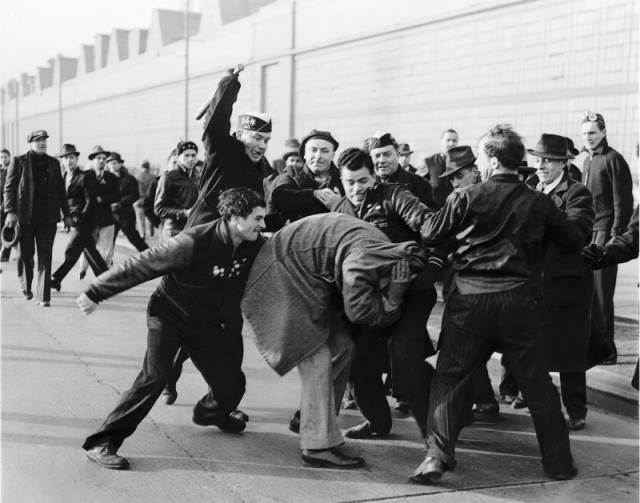

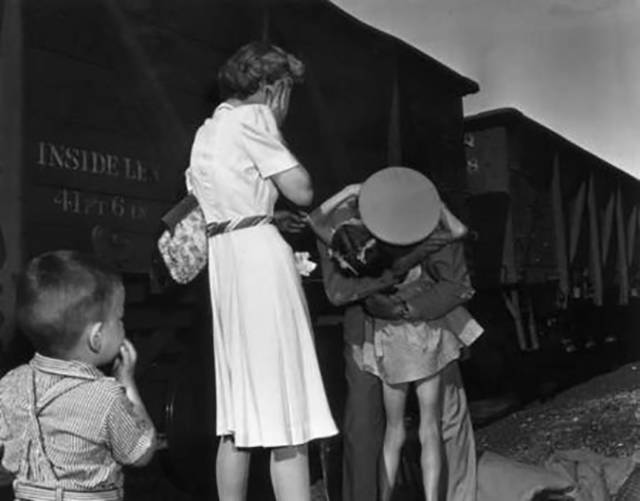

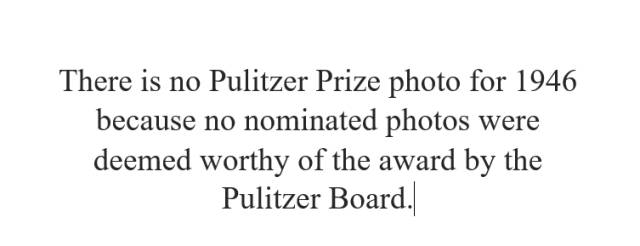
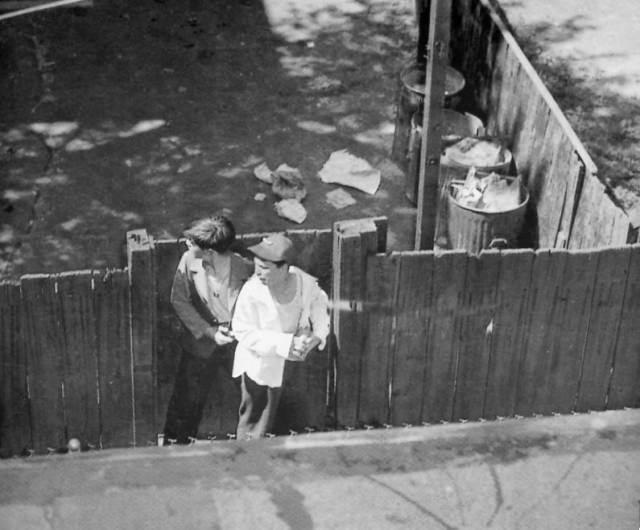


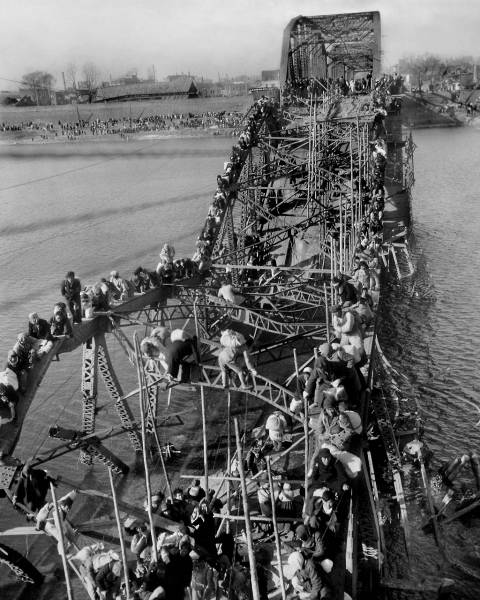
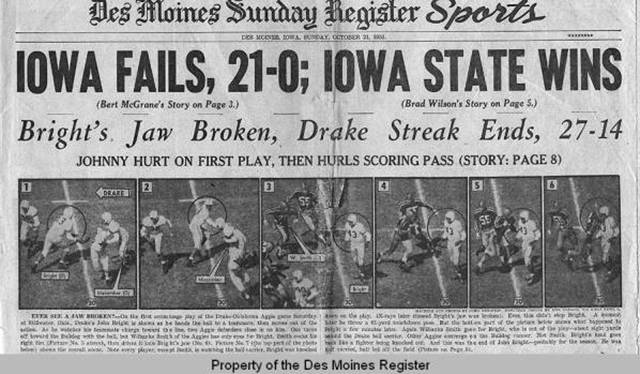
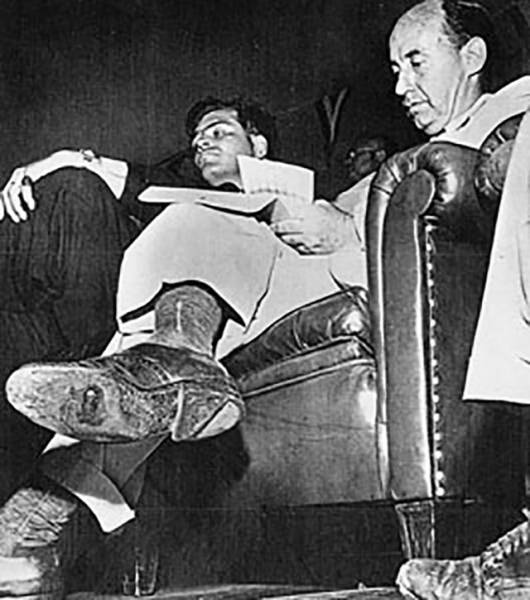
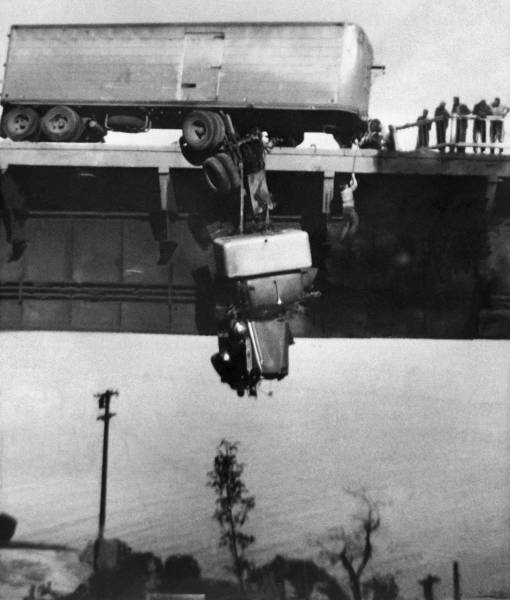
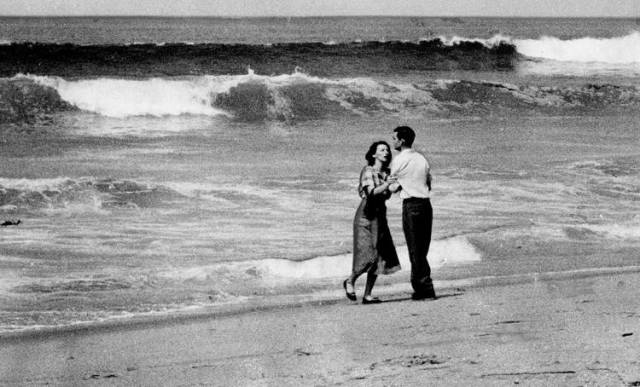


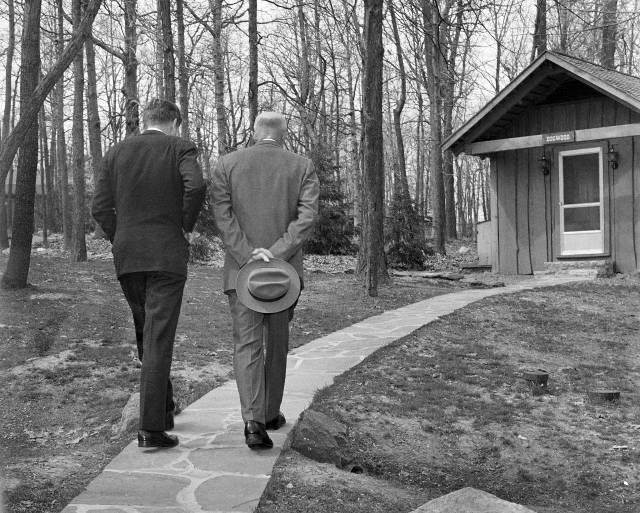
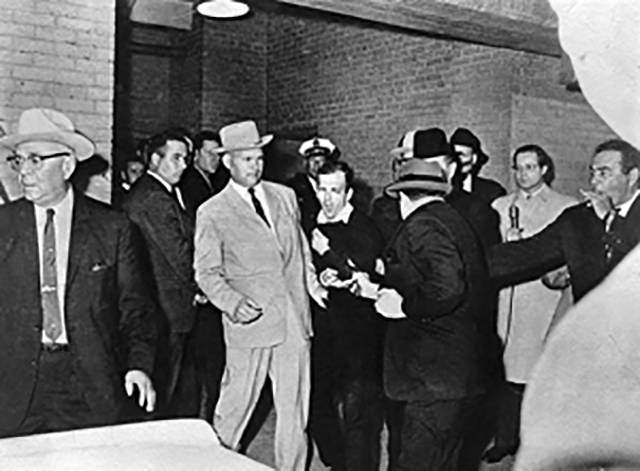
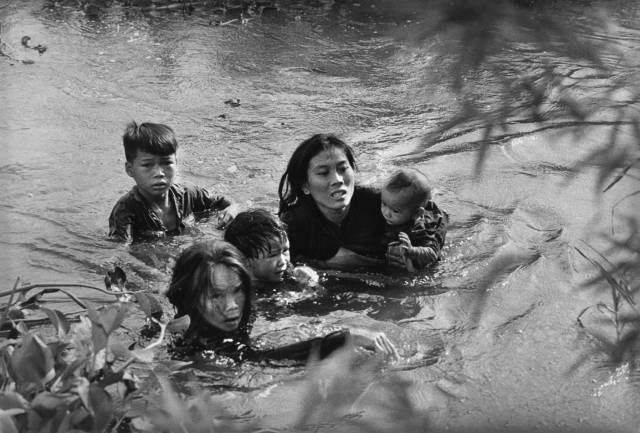
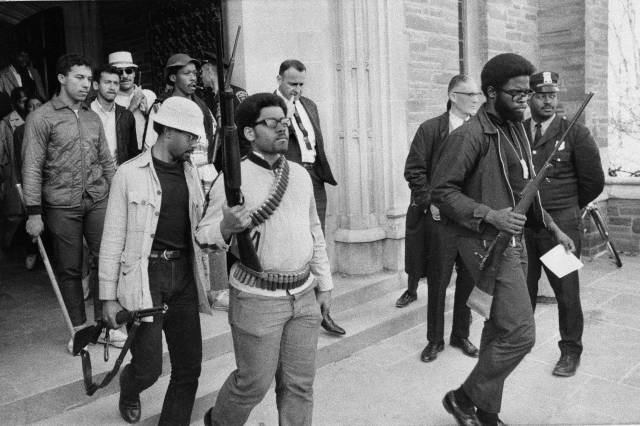
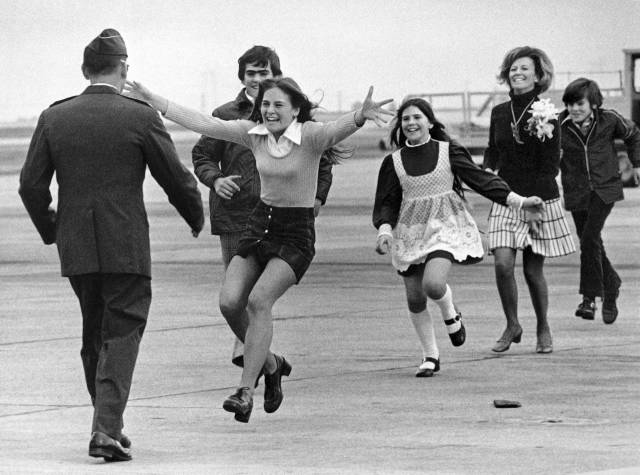
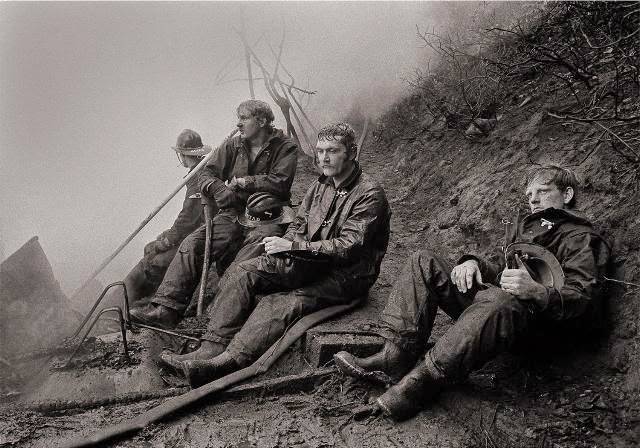
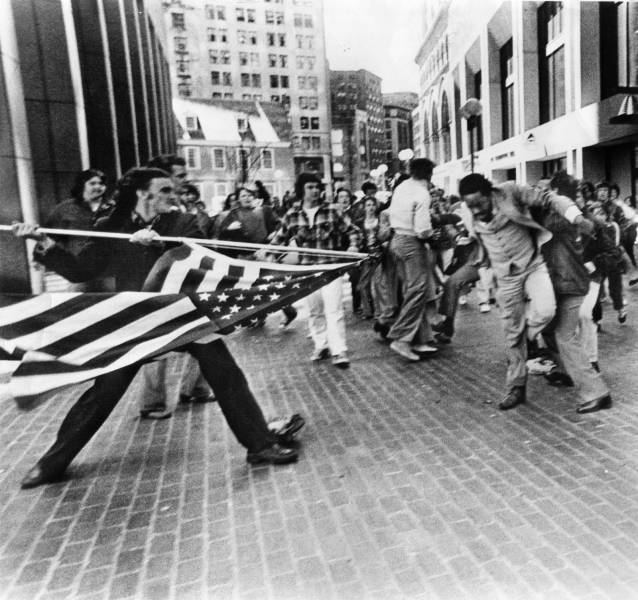
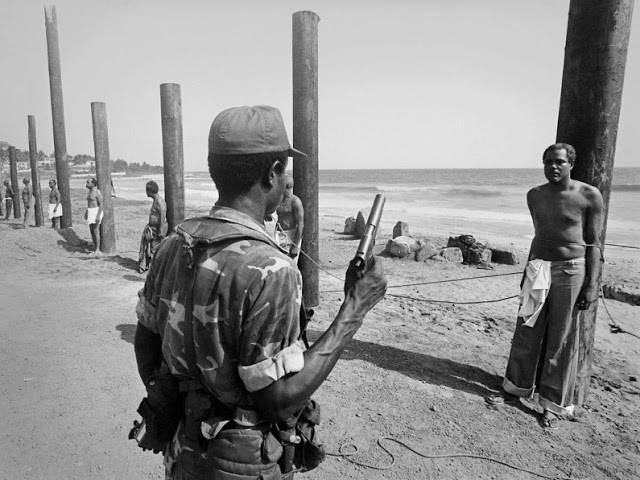
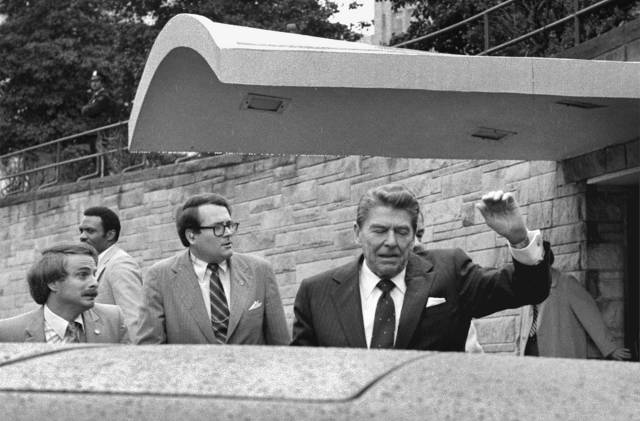
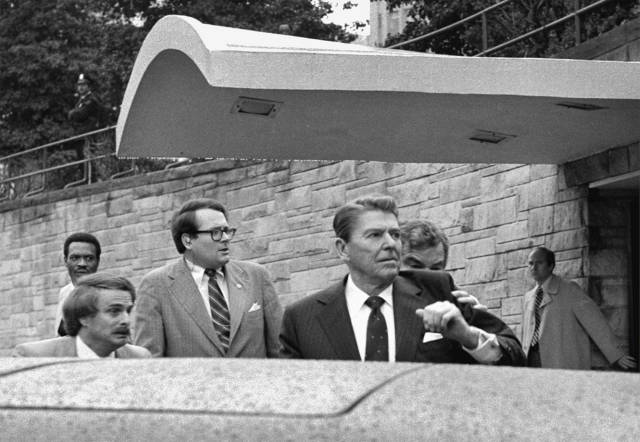
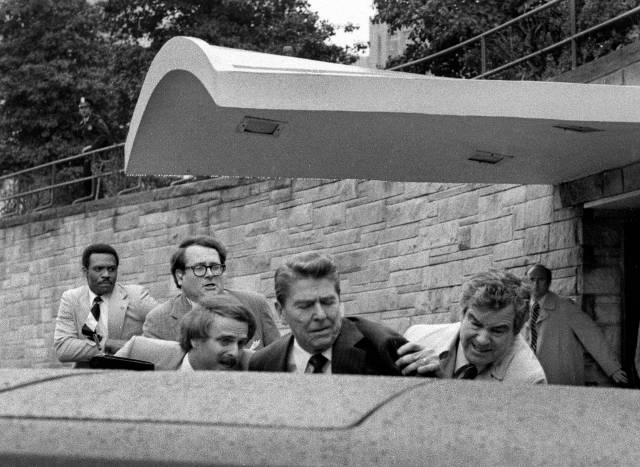
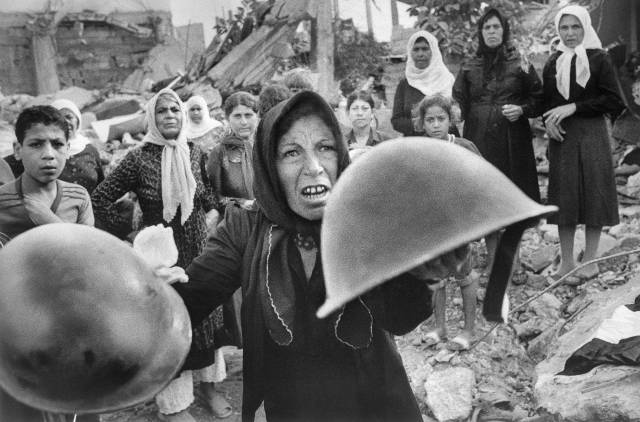
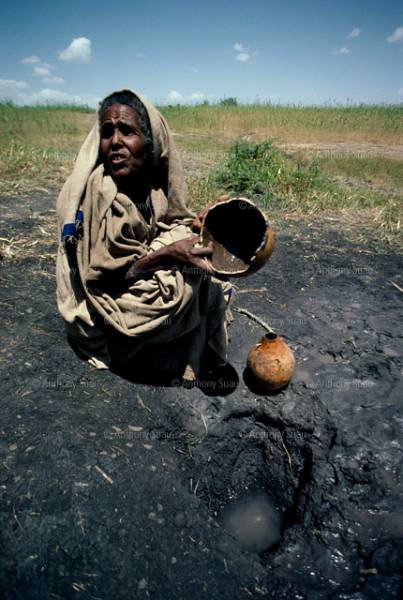
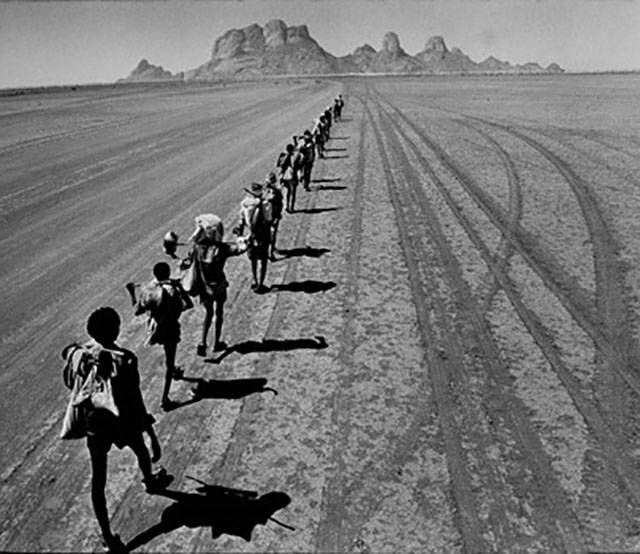

B*tch.